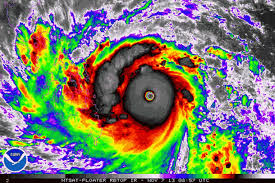 The economic cost to the Philippines of typhoon Haiyan is slowly emerging as government inspection teams reach outlying areas, revealing the extent of damage to the rice crop – and with it, commodity speculators are pushing up the price of the staple food for many of the poorest Filipinos.
The economic cost to the Philippines of typhoon Haiyan is slowly emerging as government inspection teams reach outlying areas, revealing the extent of damage to the rice crop – and with it, commodity speculators are pushing up the price of the staple food for many of the poorest Filipinos.
The typhoon’s destructive winds destroyed crops, toppled power lines and crushed up to 90 per cent of buildings as it blew through rice, sugar cane and other cash-crop growing regions of the central and eastern Philippines on November 8.
A third of the country’s rice-producing land was destroyed by the super storm, according to US-based Commodity Weather Group. These areas were already among the country’s poorest.
The Philippine Department of Finance said rice crops were the hardest hit, with about 67,000 hectares destroyed, and that figure was likely to climb significantly as inspection teams reached more remote areas.
The department estimated the average income in the hardest hit areas would drop by 25 per cent over the next six months.
Agnes Salimbangon, of the hardscrabble farming community of Daanbantayan, in northern Cebu, said she did not have much to begin with but now she had nothing.
”Thank God none of us died, but my home is completely destroyed and my mango trees are ruined,” she said. ”They take years to grow and we still owe loans on the crop. I don’t know how we’ll survive.”
According to government data, rice provides half of Filipinos’ kilojoule requirements, with the bottom third of families on the socio-economic ladder spending 30 per cent of household income on the grain. Rising rice prices have added an extra burden to the millions affected by the storm, which include more than 1 million hand-to-mouth rice farmers.
The Department of Trade and Industry has warned commodities speculators, whom they blamed for price spikes, will face criminal charges.
There is debate about the size of the storm’s impact on the national economy. The Department of Finance predicted up to 10 per cent of the affected provinces’ 2014 GDP will be wiped off the books, taking about 1 percentage point from the national GDP estimate of 7.3 per cent to 7.5 per cent.
Others put the cost much higher. Asia Development Bank economist Joseph Zveglich said the 2012 typhoon in Mindanao shaved 2.9 per cent from GDP.
”The devastation from this storm was much greater. A loss of 2½ to 5 per cent seems likely,” he said. ”You have to look at the loss of livelihoods, the devastation of farm areas and the lack of production. During reconstruction, resources are also going to be stretched, and there is only so much internal capacity. There has to be an international response.”
Critics of Manila’s muted response to the typhoon say the storm exposed many of the archipelago’s long-festering problems of corruption and government incompetence, particularly a weak central government and provincial governors who wield virtual autonomy over their fiefdoms, keeping millions of Filipinos below the poverty line.
”Corruption has been here forever. It’s a matter of minimising it, really,” Department of Finance chief economist Gil Beltran said.
Mr Beltran said that by the time reconstruction and infrastructure rebuilding was factored in, the costs could come to about 4 per cent of the Philippine GDP.
SMH
Leave a Reply
You must be logged in to post a comment.